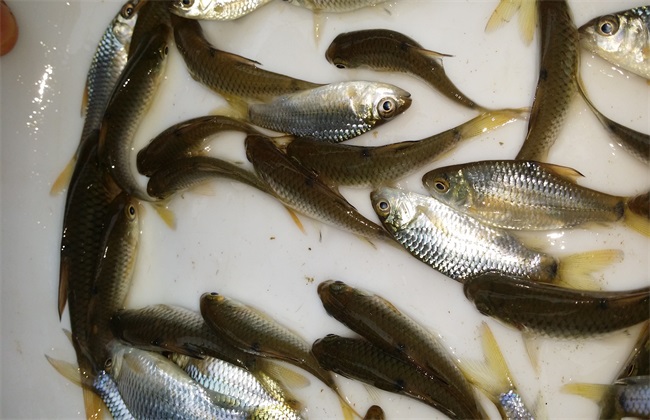Matters needing attention in herring culture
Herring and grass carp, silver carp and bighead carp are called the four major domestic fish. Its color is cyan, and it is a kind of freshwater edible fish widely cultivated in the south of the Yangtze River in China. Now there is a lot of herring production in the market, but its position is also unshakable, so do you know how to raise herring? What problems should be paid attention to when breeding? The editor will explain it to you bit by bit.

1. Construction of fish ponds
The site selection of fish ponds for herring culture is the basic condition of culture, and we cannot choose the culture site at will. In fact, the requirements of herring fish ponds are not high, as long as the transportation is convenient, the water source is adequate, the water quality is pollution-free, and the feed resources are rich. If it is an old pond, you only need to clean up the fish ponds, while the new ponds have to be excavated and built on their own, generally depending on the scale of the culture. Secondly, we need to arrange the outlet and injection outlet, and at the same time, the basic production equipment for breeding should be fully equipped, as well as aerator, feed machinery, medicine and so on.
2. Clear the pond and disinfect
Whether it is new or old ponds, fish ponds need to be cleaned and disinfected before breeding. The old pond needs to clean up the mud from the pond and then disinfect it with about 100 kilograms of quicklime. When cleaning the pond, the water depth is controlled at about 30 centimeters. On the other hand, the new pond only needs to clean up some sundries in the pond and then disinfect it with about 75 kilograms of quicklime. After clearing the pond, drain the pond water, then inject new water, wait until the first seven to ten days before seedling release, apply appropriate amount of organic fertilizer to cultivate fertilizer and water.
3. Select and release seedlings
When we choose herring fry, we will generally ask to choose high-quality fry with strong disease resistance, no disease, no mechanical damage. The second is that the specifications of fish fry should be neat, so as to facilitate breeding and management. Fish fry should be soaked with medicine at first, and then trial culture should be carried out. If the trial culture is successful, the fish fry should be put into the pond for culture. When stocking, choose when the weather is sunny, must not be carried out on cloudy and rainy days. When there is an aerator, the stocking density of herring culture can range from 2,000 to 3,000 fish per mu.
4. Bait and feed
Herring is mainly fed with snails, that is to say, it is a carnivorous fish. In addition to snails, clams, clams, shrimp and insect larvae are all fodder for herring. However, during the fry period, the herring mainly feeds on zooplankton in the water. When feeding the herring, we should feed it regularly, quantitatively, qualitatively and positionally according to the feeding situation and weather changes of the herring. Four times a day from April to June, three times a day from July to September, and two times after October.
5. Water quality management
After each feeding of the herring, we should clean up the remaining feed residue in time, otherwise it will pollute the water quality. Secondly, the aerator needs to be turned on at noon on sunny days, cloudy mornings and midnight of continuous rainy weather, otherwise the amount of dissolved oxygen in the water will be insufficient. Then we have to change the water at the right time, changing only 1/3 of the total water in the pond each time. There is a reasonable fertilization to ensure the fertility of the water body in the culture pond, fertilization is mainly organic fertilizer, usually can also use a small amount of chemical fertilizer. Finally, special microbial conditioning for fish culture can be used to regulate water quality and reduce harmful substances in the water.
That's all for the herring culture notes that the editor wants to share with you today. In fact, in the process of culture, we also need to pay attention to the regulation of water level and the prevention and control of diseases, which also have a great impact on the growth of herring.
Related
- On the eggshell is a badge full of pride. British Poultry Egg Market and Consumer observation
- British study: 72% of Britons are willing to buy native eggs raised by insects
- Guidelines for friendly egg production revised the increase of space in chicken sheds can not be forced to change feathers and lay eggs.
- Risk of delay in customs clearance Australia suspends lobster exports to China
- Pig semen-the Vector of virus Transmission (4)
- Pig semen-the Vector of virus Transmission (3)
- Five common causes of difficult control of classical swine fever in clinic and their countermeasures
- Foot-and-mouth disease is the most effective way to prevent it!
- PED is the number one killer of piglets and has to be guarded against in autumn and winter.
- What is "yellow fat pig"? Have you ever heard the pig collector talk about "yellow fat pig"?



